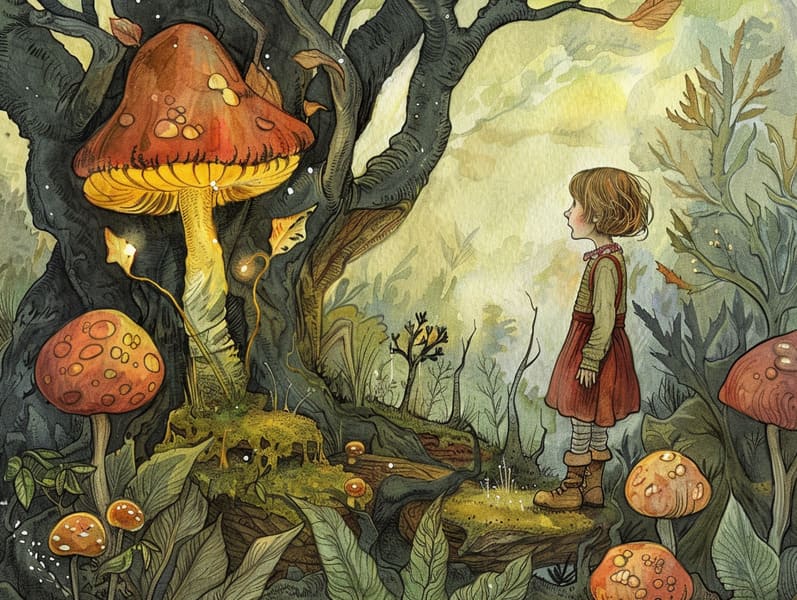Appreciating the Joy of Nighttime Tales: Developing Cherished Memories with Kids
Appreciating the Joy of Nighttime Tales: Developing Cherished Memories with Kids
Blog Article

Evening is a cherished time for moms and dads with their little ones. It’s a occasion to settle down, get cozy, and revel in the magic of stories.
For ages, bedtime stories for kids have been a valued habit, offering more than just a way to drift off. They provide an chance for connection, growth, and stimulating imagination.
The Role of Bedtime Stories
Children's bedtime stories go beyond a way to end the day. They play a significant role in a child’s growth and in building the adult-child rapport. Here’s why they are important:
1. Closeness Moments: Telling bedtime tales develops a special loving connection between families. It’s a moment of affection that helps children feel secure and safe.
2. Language Skills: Hearing tales helps children develop their verbal abilities. They understand new language, understand grammar, and improve their auditory and grasping abilities.
3. Inventiveness: Children's tales lead them to enchanted worlds, promoting inventiveness. They dream of characters, settings, and adventures, which energizes their creative thinking.
4. Feeling Recognition: Kids' tales often depict characters facing difficulties and states. These tales help kids grasp and process their own reactions, enhancing emotional intelligence.
5. Cognitive Development: Engaging with a story helps children develop concentration, memory, and problem-solving skills. They pick up to follow tales, remember pieces, and predict outcomes.
Integrating Stories into Night Routine
Creating a bedtime routine that incorporates narrating bedtime stories is straightforward and satisfying. Here’s how to turn it into a valued part of your sleep-time practice:
1. Select a Comfortable Location: Pick a quiet place where you and your child can relax without distractions. A peaceful bed or a relaxing reading nook works wonderfully.
2. Pick the Right Time: Pick a specific time each night for bedtime stories. Dependability helps children be ready and makes the habit more sustainable.
3. Select Age-Appropriate Stories: Pick tales that are right for your child’s developmental stage. Young kids might enjoy illustrated books with uncomplicated narratives, while school-age kids may like detailed stories with more intricate narratives.
4. Animate the Tale: Make the tale be engaging by incorporating different character voices, adding story sounds, and having your child to be active. Ask things about the story to involve them.
5. Create a Calm Atmosphere: Reduce the lights, use quiet tones, and create a tranquil environment to help your child get ready for sleep.
How to Locate Bedtime Stories
There are countless options where you can find fantastic bedtime stories for children. Here are some ways to check out:
1. Children’s Literature: Try your community library or bookstore to find a diverse selection of bedtime stories for kids. Browsing the options together can be a enjoyable activity that also gives children to decide on stories that they are drawn to.
2. Web Sources: There are many places online that offer free bedtime stories. Sites like kids' story platforms provide a variety of short stories for kids that you can print out. These websites are great for finding new and varied stories without paying.
3. Audio Stories and Apps: For nights when you’re too exhausted to read, consider audiobooks or storytelling apps. These can provide a relaxing voice to read your child a story, ensuring they still get their bedtime story fix. Apps often offer interactive elements that can capture their attention further.
4. Personal Stories: Create your own stories fitting your child’s experiences. Personalized stories can be especially engaging and meaningful. You can bring your child in the development process, making them a part of the adventure.
Why Short Stories Are Effective
Short stories for kids are very helpful for bedtime. They provide all the benefits of longer stories but are more brief, making them perfect for getting ready for bed before sleep. Here’s why short stories are a perfect choice:
1. Clear and Simple: To-the-point tales are straightforward and simple for kids to grasp, even after a long day. They can quickly grasp the line and enjoy the story without losing interest.
2. Immediate Interest: Short tales promptly engage children, holding their involvement and wonder. This makes them ideal for keeping bedtime customs manageable yet enjoyable.
3. Many Choices: To-the-point tales provide for variety in your bedtime tales. You can opt for a different story each night, keeping the ritual new and exciting for your child.
4. Time Management: For busy parents, quick stories are a easy way to verify children still get their nightly dose of storytelling. They fit well into a tight schedule while still offering the full good points of a bedtime story.
The Allure of "Read Me a Story"
The simple phrase, “Read me a book,” can unlock a world of magic for children. Reacting to this request not only addresses a child’s requirement for attention and engagement but also creates lasting times. Here’s why it’s charming:
1. Connection: Narrating to your child strengthens a deep emotional connection. It’s a time for proximity, sharing, and bonding.
2. Legacy: Creating a bedtime story ritual creates a valued tradition that children expect every night. It’s a ritual that can be given through generations.
3. Mutual Learning: As you read, you’ll notice your child’s development and advancement. Their reactions, reactions, and understanding of the stories evolve, offering insights into their developing minds.
4. A Safe Haven: Bedtime stories provide a safe space for children to discover emotions, face fears, and find comfort in the read more recognizable presence of a parent.
In Summary
Children’s bedtime stories are a valuable tool for developing a child’s evolution and creating unforgettable moments of closeness.